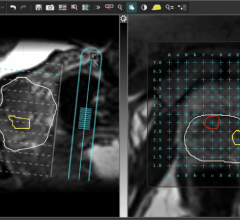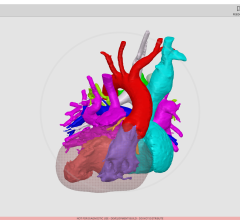
A study published online Aug. 24 by the journal Pediatrics finds a significant decrease in the use of computed tomography (CT) scans at children's hospitals for 10 common childhood diagnoses including seizure, concussion, appendectomy and upper respiratory tract infection.
Alternate types of imaging such as ultrasound and magnetic resonance imaging (MRI) are being used more frequently for eight of the 10 diagnoses. Study authors hypothesize the decline in CT usage may be attributable to a growing body of evidence linking ionizing radiation from CT scans to an increased risk of cancer in patients. They also point to the adoption of electronic health records, which allows for easy transfer of medical data and images and limits the need for duplicate scans.
The study, "Computed Tomography and Shifts to Alternate Imaging Modalities in Hospitalized Children," is the first of its kinds to look at CT usage across multiple hospitals and conditions.
"This study reinforces the pediatric community's commitment to think about both immediate and long term risks and benefits of our treatment," said Michelle Parker, M.D., the study's lead investigator and a physician in the Division of Hospital Medicine at Cincinnati Children's Hospital Medical Center. "Minimizing potential for harm to our patients as we work to heal them should always remain a priority."
A CT scan combines a series of X-ray images taken from different angles and uses computer processing to create cross-sectional images of bones, blood vessels and soft tissues, providing more detail than conventional X-rays. CT scans, however, emit 100 to 1,000 times more ionizing radiation than conventional X-rays.
According to previously published literature, there may be one malignancy as a result of ionizing radiation among every 10,000 children exposed to CT scans. To minimize the risk of cancer in patients requiring sophisticated imaging for diagnostic purposes, when an alternate imaging modality is indicated, doctors may be shifting to MRI which uses magnetic fields or ultrasound, which uses high frequency sound waves to show internal body images in real time.
"There may still be times when a CT scan is the most appropriate imaging tool to use, however parents should be encouraged by this study which shows that physicians and hospitals are likely incorporating new evidence and adapting to provide safe medical care," said Parker.
The study used data from the Children's Hospital Association's Pediatric Health Information System (PHIS), a comparative pediatric database of clinical and resource utilization information for inpatient, ambulatory surgery emergency department and observation unit patient encounters for 45 children's hospitals. The authors looked at inpatients and observation patients for 10 specific diagnoses at 33 participating hospitals from Jan. 1, 2004 to Dec. 31, 2012. The ten diagnoses analyzed for diagnostic imaging use included seizure, ventricular shunt procedure, craniotomy, concussion, severe head trauma, appendectomy, gastroenteritis, abdominal pain, upper respiratory tract infection and ENT conditions.
In addition to Cincinnati Children's, the study included clinicians at Children's Hospital Philadelphia, Children Health in Dallas, Texas, and Children's Hospital Association.
For more information: www.cincinnatichildrens.org


 August 09, 2024
August 09, 2024 








